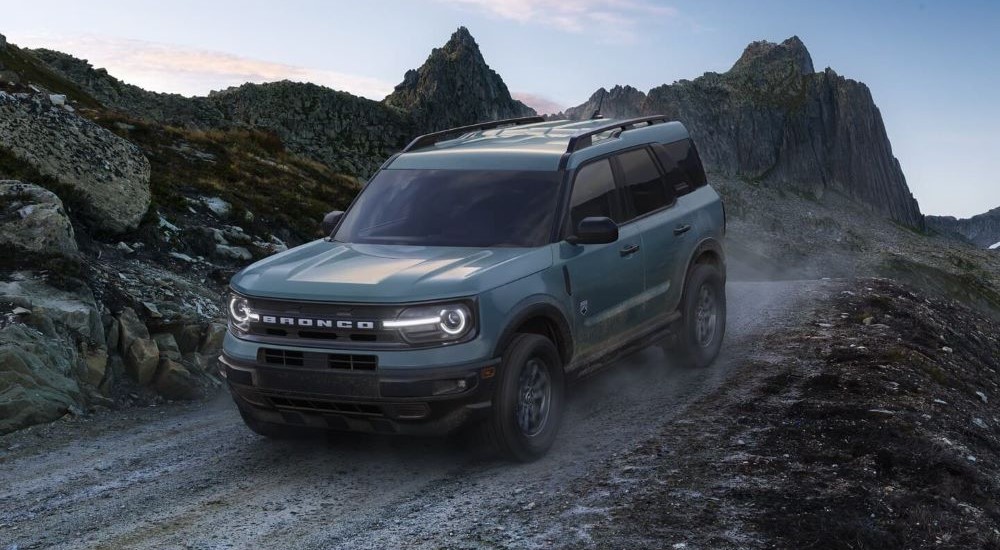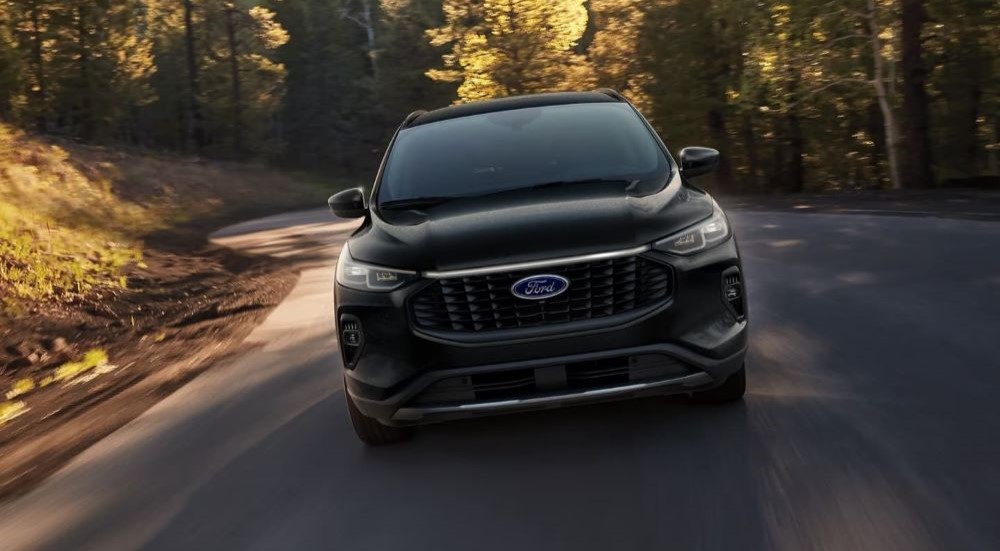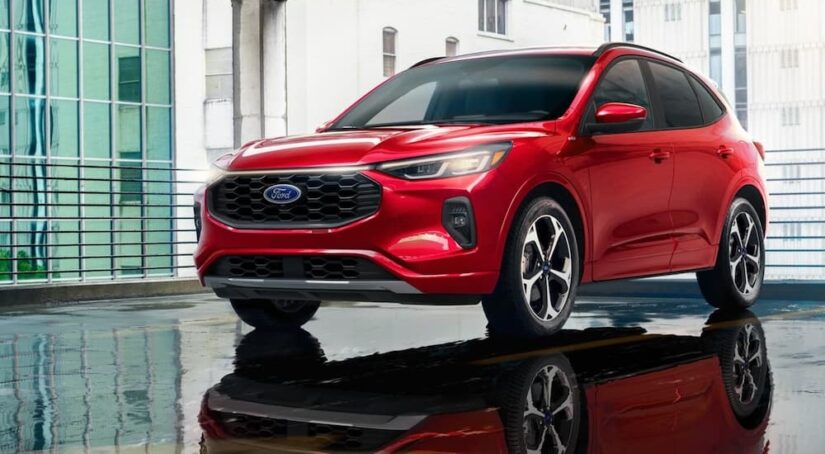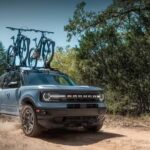Visit your local Ford dealer, and you’ll see an abundance of stylish, well-equipped SUVs like the Bronco Sport, Escape, Explorer, and Expedition. Ford caters to a variety of driver needs with its extensive lineup. The Explorer and Expedition offer larger cabins to accommodate passengers and cargo, leaving the Bronco Sport and Escape taking their respective titles in the subcompact and compact segments. Yet, these smaller SUVs still pack a mighty powerful punch.
With smaller footprints, the Bronco Sport and Escape are remarkably agile, efficient, and engaging to drive. They’re also well-equipped with Ford’s innovative technologies that stretch from safety and driver-assist tools to seamless connectivity and navigational features. How do these models differ? How do you choose between the athletic Bronco Sport and the sophisticated Escape?
Affordability
Shopping for an SUV often starts with knowing your budget or how much you can afford. As subcompact and compact SUVs, the Bronco Sport and Escape are affordably priced and offer outstanding value. For example, the 2024 Bronco Sport starts at $29,795, with the 2024 Escape priced slightly lower at $29,495.
What does this get you? The Bronco Sport Big Bend sets the benchmark with its cloth seats, heated side view mirrors, 1.5L EcoBoost engine, Safari-style roof, and Terrain Management System with five GOAT Modes. Climbing the lineup to the Heritage, Bronco Sport Free Wheeling, Outer Banks, or Badlands adds luxuries and performance-oriented components, with the Badlands boasting the highest price tag at $38,390.
The 2024 Ford Escape starts with the Active, which also features a 1.5L EcoBoost engine and front-wheel or all-wheel drive. It’s outfitted with Ford’s SYNC infotainment system and wireless Apple CarPlay and Android Auto integration. From there, trims like the ST-Line, ST-Line Select, ST-Line Elite, and Platinum add luxuries, culminating with the Escape Plug-in Hybrid that starts at $40,500.
The Bronco Sport and Escape have comparable starting prices and value-oriented packaging, so either is an excellent choice. As you shop between the models, consider the aesthetics, packaging, and powertrain. Do you want the Escape’s PHEV option? Or do you appreciate the Bronco Sport’s more athletic and rugged looks?

Size and Capacities
The Escape and Bronco Sport might be the smallest in Ford’s SUV lineup, but Ford expertly designed their cabins to feel spacious and accommodating. The SUVs offer seating for five and are comparably sized, with only slight differences in wheelbase, length, and width. Height proves to be the most significant difference, with the Bronco Sport sitting taller at 70.2 inches, compared to the Escape at 66.1 inches.
How does this impact the cabin? Despite being a subcompact SUV, the 2024 Bronco Sport offers a slightly larger passenger volume and significantly more headroom in the front and second rows, likely because of its taller height. For example, the 2024 Escape offers 40 inches of headroom in the front and 39.3 inches in the rear compared to the Bronco Sport’s 41.5 inches and 41.7 inches, respectively. However, the Escape’s second row offers more legroom at 40.7 inches, with the Bronco Sport feeling much more cramped at 36.9 inches.
Although they have comparable footprints, the 2024 Escape and 2024 Bronco have distinct advantages and disadvantages. As a compact SUV, the 2024 Escape offers more legroom in the second row and significantly more room for cargo, with a total capacity of 68.5 cu.ft. or 37.8 cu.ft. behind the second row. Alternatively, the Bronco Sport offers more headroom in the front row. Still, passengers in the second row suffer, and cargo capacity is minimal, with 32.5 cu.ft. behind the second row, or 65.2 cu.ft. total.
Performance and Efficiency
Smaller SUVs often fall into two realms. They either offer lackluster performance and err on the side of efficiency, or they’re surprisingly engaging. Fortunately, Ford strikes an excellent balance with the Bronco Sport and Escape. Both SUVs offer multiple engine choices, with the Escape also including a hybrid and plug-in hybrid option.
For 2024, the Bronco Sport and Escape roll off Ford’s production line with a standard 1.5L turbocharged EcoBoost and eight-speed automatic transmission. The engine produces around 180 hp and 190 lb-ft of torque, with the Escape seeing as much as 199 lb-ft of torque. The Escape is also more efficient because of the Bronco Sport’s four-wheel drive, which yields a combined fuel economy of 26 MPG compared to the Escape’s average of 28 MPG on all-wheel drive models and 30 MPG on front-wheel drive models.
The SUVs also offer a more potent 2.0L turbocharged EcoBoost that, like the 1.5L, produces a similar output of 250 hp and anywhere from 277 to 280 lb-ft of torque. Again, fuel economy is better in the Escape, which averages 26 MPG combined, compared to the Bronco Sport at 23 MPG combined. From there, the Escape’s powertrain lineup includes a 2.5L inline-four hybrid that produces 192 hp and a 2.5L inline-four plug-in hybrid with a 14.4-kWh battery that delivers 210 hp to the PHEV.
If you’re looking purely at engine options and engaging performance, the Escape gains the advantage because of its four-engine lineup that includes a hybrid and plug-in hybrid powertrain. Likewise, the Escape proves more efficient than the Bronco Sport, with its best fuel economy coming from the hybrid powertrain, which gets 42 MPG in the city and 36 MPG on the highway.
Styling and Packages
One of the most exciting aspects of shopping for a Ford is discovering the many options to customize the SUV to your style and performance needs. The Bronco Sport and Escape are no exception and showcase two distinct approaches to styling. Where the Escape is sporty and sophisticated, the Bronco Sport looks every part of the trail runner and adventurer.
The Bronco Sport trims offer exclusive design details that complement various styles. For example, the Heritage Edition celebrates the Bronco’s history with classic elements like its Oxford White-painted roof and plaid cloth seats. The Bronco Sport Free Wheeling takes a different approach with its two-tone black roof and exclusive badging. You can even add packages like the Black Diamond Off-Road, which puts the Bronco Sport in stealth mode with blacked-out elements that ready it for light off-roading.
The Escape ventures beyond rugged athleticism to sophistication, with the ST-Line boasting sportier elements. With a unique grille, badging, and spoiler, the ST-Line trims feature exclusive red stitching throughout the interior, reflecting its penchant for performance. Trims like the Platinum are more refined and luxurious, with an upscale cabin dressed in ActiveX trimmed seats and offering various conveniences and comforts like heated seats, a heated steering wheel, and wireless charging.
When it comes to style, there’s no clear winner between the Escape and Bronco Sport because the SUVs are remarkably unique. Choosing between the models comes back to your style preferences and whether you appreciate a rugged road warrior or love the sophisticated elegance the Escape offers.

How Do You Choose?
Ford’s stellar reputation for building reliable and well-equipped vehicles means you’re already off to an excellent start by exploring the pros and cons of the Bronco Sport and Escape. Ultimately, choosing between the models comes down to four primary components: affordability, performance and efficiency, size and capacities, and styling. With comparable starting prices, styling becomes a key factor because you’re likely drawn to the looks of one over the other. From there, solidifying that choice requires looking at its handling, efficiency, and capacity for hauling passengers and cargo.
The goal is to choose the SUV that checks all the boxes on your must-have list without asking you to compromise. The Bronco Sport is an excellent option if you’re looking for an athletic SUV with plenty of personality and a penchant for adventure. However, if you’re drawn to a more sophisticated SUV that offers hybrid and PHEV options, there’s no question the Escape is the better choice.



